When I joined NIGMS about four years ago, I was struck by the number of press releases from journals and grantee institutions that came across my desk each day. Many of them focused on a recently published paper and failed to explain how the work fit into the broader field. Others overstated the research results to make them sound more exciting and closer to clinical application.
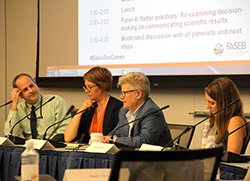
Around the same time, science communicators started writing articles and conducting studies about the effects of hyped research findings (e.g., Schwartz et al., 2012; Yavchitz et al., 2012  , Sumner et al., 2014
, Sumner et al., 2014  ; Vox, 2017
; Vox, 2017  ). While these discussions focused on clinically oriented research, we at NIGMS began thinking deeply about how the issue relates to basic biomedical science. On the heels of our work with the Federation of American Societies for Experimental Biology (FASEB) on enhancing rigor and reproducibility in biomedical research, we started talking to them about this topic as well. Two years later, we were pleased to host their Workshop on Responsible Communication of Basic Biomedical Research: Enhancing Awareness and Avoiding Hype.
). While these discussions focused on clinically oriented research, we at NIGMS began thinking deeply about how the issue relates to basic biomedical science. On the heels of our work with the Federation of American Societies for Experimental Biology (FASEB) on enhancing rigor and reproducibility in biomedical research, we started talking to them about this topic as well. Two years later, we were pleased to host their Workshop on Responsible Communication of Basic Biomedical Research: Enhancing Awareness and Avoiding Hype.
The June 22 meeting brought together a diverse group of science communicators who included early and established investigators, researchers who study science communication, academic and corporate communication officers, policy advisors and journalists. Each panelist represented a stakeholder group with a role in what panelists later called the “hype cycle” and shared his or her perspectives on the problems of hype, the incentives that cause it and recommendations for avoiding it. The meeting focused on basic biomedical research, but the discussions were also relevant to other areas of science.
In her keynote address  , veteran science journalist Erika Check Hayden defined hype as “exaggerating the outcomes of research, for whatever motives people have, leading to potential negative effects due to inaccurate portrayal of research.” She credited this definition to Judith Greenberg, our deputy director.
, veteran science journalist Erika Check Hayden defined hype as “exaggerating the outcomes of research, for whatever motives people have, leading to potential negative effects due to inaccurate portrayal of research.” She credited this definition to Judith Greenberg, our deputy director.
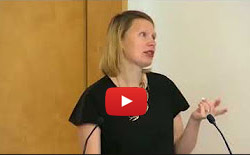
The subsequent discussions highlighted the shared responsibility among all the stakeholder groups for improving science communication and changing the incentives for it. Panelists acknowledged that scientists sometimes oversell the conclusions of studies hoping to get their work published in “better” journals or to improve their chances for obtaining funding; journals may decide on manuscripts to publish based on which ones they think will be cited the most or get press attention; communication officers and journalists are often judged by how many hits their stories get; and universities and research institutes may consider the fundraising potential of scientific news stories.
Here are some of the topics discussed during the workshop that really resonated with me.
The science of science communication.
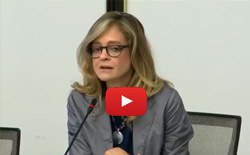
This is an active field of study, with researchers using evidence-based approaches to investigate the effects of communication on both the scientific enterprise and public trust. There is a lot we can glean from this type of research to inform and improve science communication efforts. One suggestion from panelist and science communication researcher Anthony Dudo, which is based on his survey results on scientists’ public engagement  , is for all science communicators to think strategically about their communication objectives. Anthony suggested approaching communication like a scientific research project: Develop and follow a logic model to outline both long-term and short-term goals, and then establish the best tactics. Finding ways to measure outcomes is also important in developing effective communication practices.
, is for all science communicators to think strategically about their communication objectives. Anthony suggested approaching communication like a scientific research project: Develop and follow a logic model to outline both long-term and short-term goals, and then establish the best tactics. Finding ways to measure outcomes is also important in developing effective communication practices.
Telling stories at the local level.
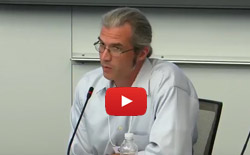
A number of panelists, including scientists, university public information officers and journalists, talked about the value of sharing stories about scientific research with family, friends, acquaintances and others in their social networks. They said these conversations can go a long way in helping the public understand and appreciate the process of discovery. Similarly, they said that coverage in local and niche publications, which is much more attainable than coverage in national and mainstream outlets, also goes a long way toward building scientific awareness in the relevant communities. In fact, a 2015 Pew Research Center study  that looked at the news habits of residents in three disparate U.S. metro areas (Denver, Colorado; Macon, Georgia; Sioux City, Iowa) found that residents follow local news more closely than national news, with nearly 65 percent of the cities’ residents talking about local news in person on a weekly basis and about 20 percent commenting on local news blogs.
that looked at the news habits of residents in three disparate U.S. metro areas (Denver, Colorado; Macon, Georgia; Sioux City, Iowa) found that residents follow local news more closely than national news, with nearly 65 percent of the cities’ residents talking about local news in person on a weekly basis and about 20 percent commenting on local news blogs.
Diminishing the role of the press release.
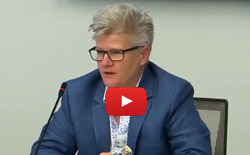
All the panelists agreed that press releases are overused and aren’t always needed to share information with the intended audience. Panelist Matt Shipman, who leads research communication efforts at his institution and evaluates press releases for Health News Review, thinks that only 35 to 40 percent of press releases garner media attention, with just 5 percent generating coverage in mainstream outlets. Sara Reardon and Jocelyn Kaiser, who represented the journalists on the panel, noted that they receive far too many press releases and that they generally do not use them in developing stories. They said the most useful ones explain how the new study moves the field forward, how far the finding is from the clinic and what the limitations are. Including the caveats in the press release is strongly associated with a higher likelihood of any resulting news pieces also including them, according to another recent study  .
.
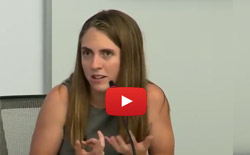
NIGMS has already changed how we communicate about the research we support. For example, instead of focusing on a single paper or finding, our research stories for the public now regularly feature the overall arc of a field—including complexities and uncertainties—or follow a scientist’s career. We’re also working to increase our scrutiny and that of reviewers on how scientists communicate their conclusions in grant applications and what the lasting influence of their work has been on their fields. And communication is among the student skills that we hope to see developed by graduate programs supported through our new T32 funding opportunity announcement to be published this fall.
The workshop was a first step toward catalyzing a broader discussion on this topic, and we welcome your input on how the conversation could be advanced. You can read more about the workshop and the panelists’ recommendations in the meeting summary. You can also watch the entire meeting on the NIH Videocasting and Podcasting site.


Thanks for these important reminders and addressing this issue. I just called out my own universities news service for a classic example of overhype–a mouse study on reducing brown fat that linked to a media story beginning “Say goodbye to pricey gym memberships, fad diets, and every other weight loss tool out there.”
Some good points here but there are two undiscussed polar bears in the room—1) hyped or gravely sober, there isn’t enough science reporting of any kind in the general media. Science remains a hard sell in the public forum. 2) true signifance in scientific discovery is largely retrospective. Many a peer-reviewed paper supported by manicured press releases, enthusiastic peer comments (“..Dr. X. Who was not involved in this research says it’s the greatest thing since sliced bread…””) and front page coverage has come to nothing in the long run while an obscure paper on fluorescent jellyfish proteins went onto a Nobel.
Lacking a bioscience crystal ball even NIGIMS will always struggle with picking the significant.